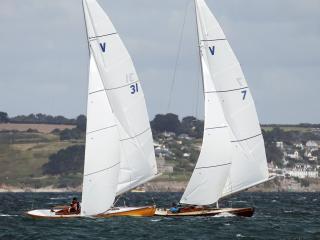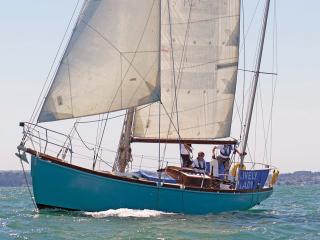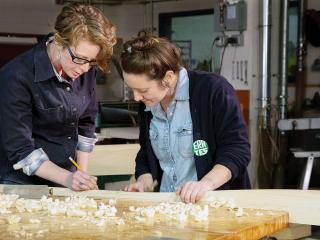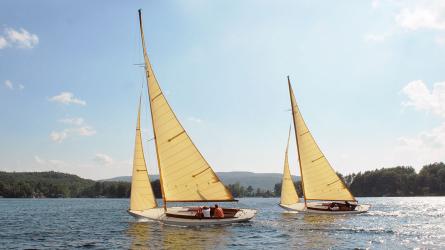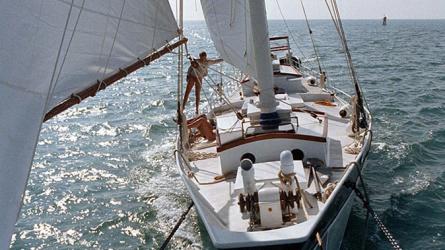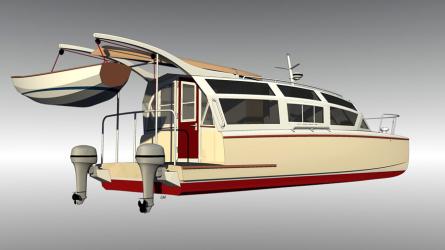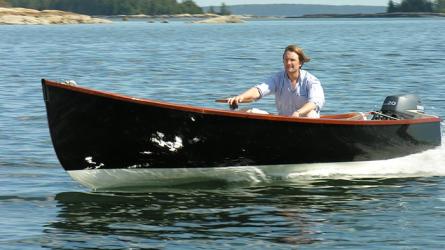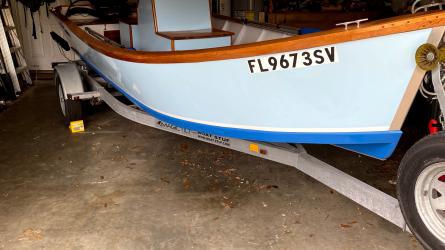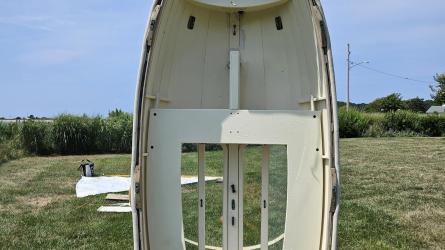May / June 2020
Why NIÑITA?
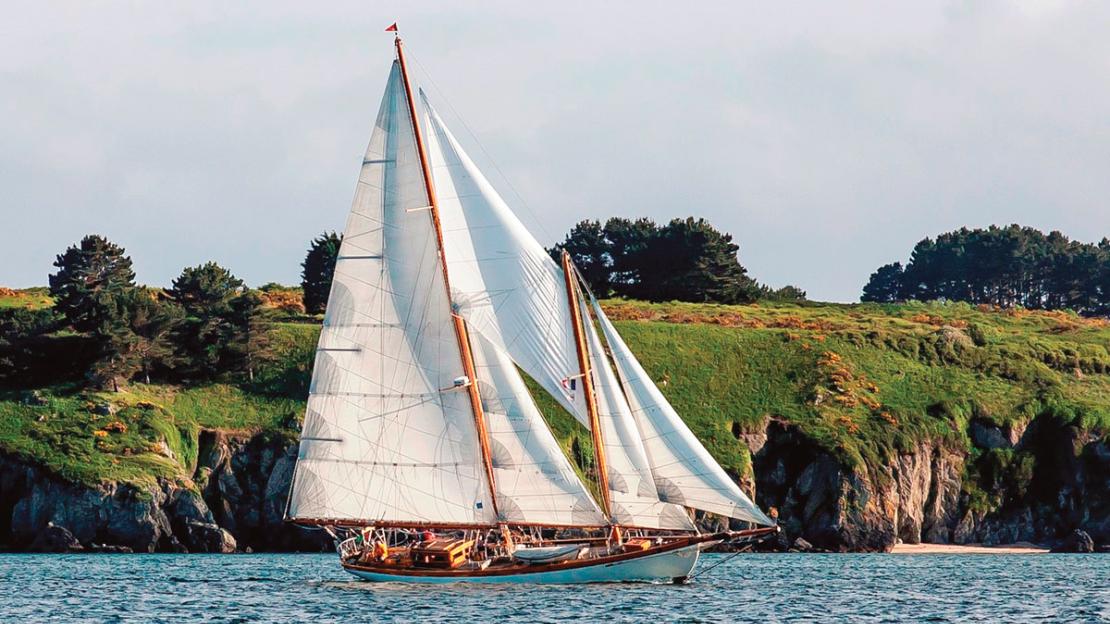
Since her launching in Nova Scotia in 2004, NIÑITA has spent much of her time cruising and racing in Europe. Here, she is shown rounding Île de Groix in the Bay of Biscay off the coast of southern Brittany, France, during the Les Voiles de la Citadelles classic yacht regatta in 2015.
My wife, Jenny, and I are both lifelong sailors and have always owned boats together, and we knew that after our two daughters, Sammy and Debbie, finished school and left home, we would want to live aboard a classic yacht. When that time came, we looked through countless advertisements, but every one of the wooden boats we considered would have required a keel-up rebuild to be safe for extensive ocean sailing. We also looked at modern boats in a variety of materials, including aluminum and steel, and classic designs built with modern materials. But nothing quite seemed to work. We were concerned about comfort and accommodating occasional guests, but we also insisted on having a capable performer that would not be too large for the two of us to manage by ourselves.
Our thoughts kept returning to W. Starling Burgess’s schooner-yacht NIÑA, which we had first seen in Llewellyn Howland III’s article about the designer in WoodenBoat (WB Nos. 71–74). The article quoted Burgess as saying that of all his boats, NIÑA had been his favorite, and I sensed that this was a special boat. The lines plan showed a classic flush-decked, long-keel schooner, beautifully proportioned and designed not for cruising but for racing. She proved herself by winning the 1928 Transatlantic Race that she was designed for and many other races over subsequent decades (see accompanying article, page 76). She was wide by the standards of racing yachts of the era, with nearly 15' of beam for her 50' waterline length. In 1927, comfort for the crew of 12 or so was not high on the list of priorities, but her volume showed ample accommodation possibilities. In Howland’s article, the seeds were sown—we wanted to sail and to live on a yacht something like NIÑA.
As we continued our search, we found a Nova Scotia advertisement for an unfinished Herreshoff ketch, 53' long, with modern strip-planking and fiberglass-epoxy sheathed. The construction looked superb, but we have found Herreshoff designs, beautiful as they are, to be narrow and shallow, and this one had a centerboard. All of that conspired against making a truly comfortable home. We declined the boat, but when the yard manager asked what we were really looking for, our conversations turned to an adaptation of NIÑA.
The yard, Covey Island Boatworks, ultimately quoted a price that we could afford—just. Jenny, who is the adventurous one in our partnership, said, “If we don’t do this, we will always regret it.” We had NIÑITA built to Burgess’s hull and sail plans but with our own interior layouts and machinery arrangements.
To read the rest of this article:
Click the button below to log into your Digital Issue Access account.
No digital access? Subscribe or upgrade to a WoodenBoat Digital Subscription and finish reading this article as well as every article we have published for the past 50-years.
ACCESS TO EXPERIENCE
2-for-1 Print & Digital Subscription Offer
For this holiday season, WoodenBoat is offering our best buy one, get one deal ever. Subscribe with a print & digital subscription for $42.95, and we’ll give you a FREE GIFT SUBSCRIPTION to share with someone special.
1 YEAR SUBSCRIPTION (6 ISSUES)
PLUS ACCESS TO MORE THAN 300 DIGITAL BACK ISSUES
PRINT+DIGITAL $42.95
Subscribe
To read articles from previous issues, you can purchase the issue at The WoodenBoat Store link below.
 Purchase this issue from
Purchase this issue from

